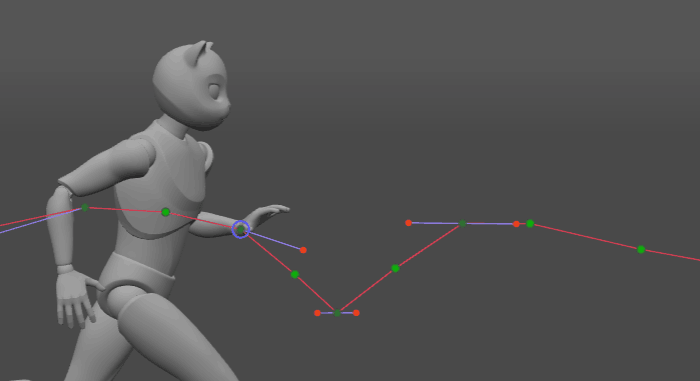Nekki releases Cascadeur 2025.2
Nekki has released Cascadeur 2025.2, the new version of the AI-assisted animation app.
The release extends the software’s new AI inbetweening system, making it possible to choose movement styles for the animation generated, and improves workflow with motion trajectories.
Create animations based on real-world physics, aided by AI-based tools
Launched in 2019, Cascadeur is intended as an artist-friendly alternative to conventional animation software for game development, motion graphics or visual effects work.
Although it has standard tools for rigging, posing and animating characters, its unique selling point is a set of AI-assisted, semi-automated toolsets.
Key poses can be quickly established for a character via the AutoPosing system, which lets users reposition a small number of joints, and have Cascadeur take care of the rest of the body.
For a jumping character, the software can then calculate a physically correct trajectory between the key poses.
For other types of motion, a separate AI-trained system, AutoPhysics, converts an existing keyframe animation into a physically accurate version of itself.
Once generated, animations may be exported the FBX, Collada or USD format for use in other DCC applications, or game engines like Unity and Unreal Engine.
Cascadeur 2025.2: new options for AI inbetweening
Cascadeur 2025.2 extends the new AI inbetweening system added in the previous release, which automatically generates plausible motion cycles between two key poses.
A new Style option makes it possible to choose the style of motion generated, including options for walks, runs, crawls, jumps, falls, acrobatic and combat moves.
In addition, the maximum length of the animation that can be generated by inbetweening has been increased from 89 to 120 frames.

New options for working with Trajectories
Other changes include the option to adjust curve tangents for trajectories directly in the viewport when working in Trajectory Edit Mode, as shown in the video above.
The feature is only available for Bezier-type interpolations, not Linear or Step interpolations, and is currently still in beta.
There is also a new category of trajectories, Direction Trajectories, in addition to the existing Translation and Rotation Trajectories.
Other workflow improvements and support for 3Dconnexion’s 3D mice
Workflow improvements include better automatic fulcrum detection, with the software now detecting fulcrum points by itself “in most cases”, removing the need to set them manually.
There are also updates to AutoPhysics, Constraints and the video motion-capture toolset: you can find a full list of changes via the link at the foot of the story.
In addition, Cascadeur now supports 3Dconnexion SpaceMouse input devices, although currently on Windows only.
Price, system requirements and release date
Cascadeur 2025.2 is compatible with Windows 10+, Ubuntu 20.04+ Linux and macOS 13.3+.
For users earning under $100,000/year, Indie subscriptions cost $12/month or $96/year. Pro subscriptions cost $49/month or $396/year and add advanced features.
Both are rent-to-own plans, with users qualifying for a perpetual license after one year.
There is also a free edition, which is not licensed for commercial use, and saves animation in its own .casc file format, making it impossible to use in other DCC apps.
Read a full list of new features in Cascadeur 2025.2 in the release notes
Have your say on this story by following CG Channel on Facebook, Instagram and X (formerly Twitter). As well as being able to comment on stories, followers of our social media accounts can see videos we don’t post on the site itself, including making-ofs for the latest VFX movies, animations, games cinematics and motion graphics projects.
